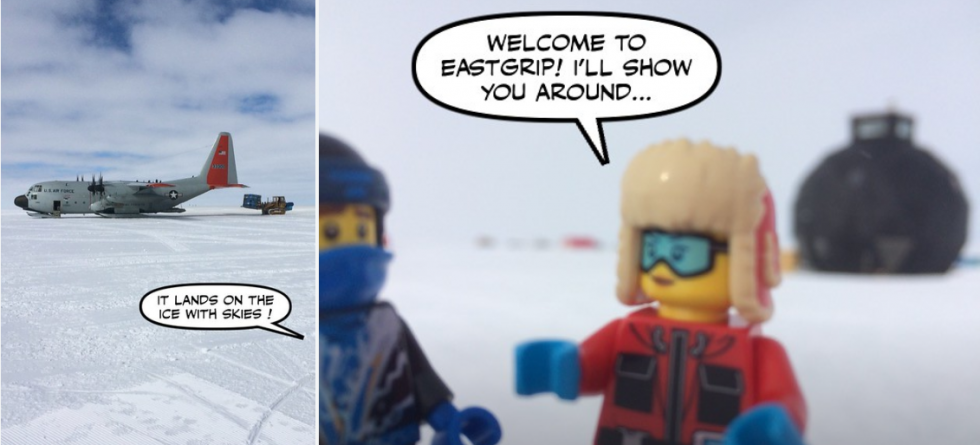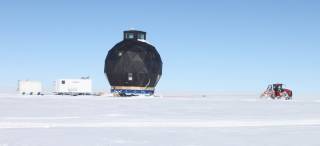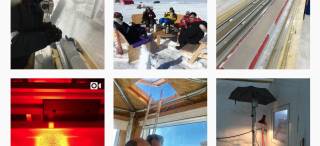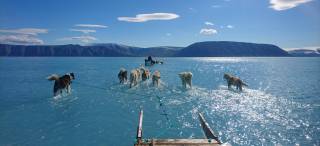This summer a lego ninja was overpowered by a lego scientist. As this lego scientist was on his way to field work on the Greenland ice sheet, the lego ninja didn't have much of a choice – he had to come too.
The following weeks you can follow follow the research here.
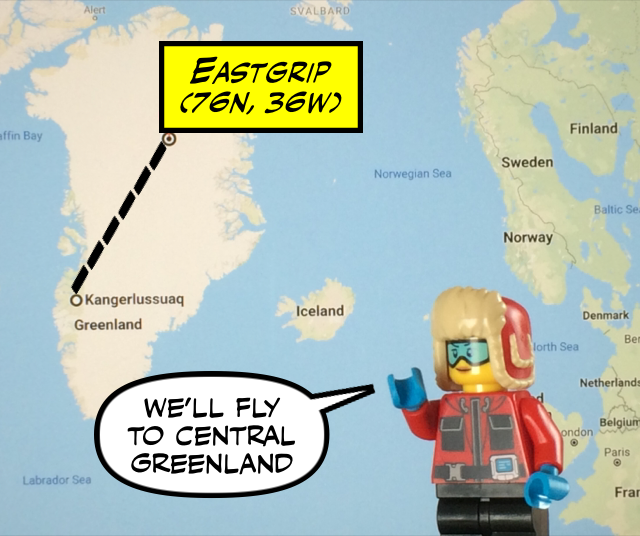
Petra Langebroek is a climate scientist with Norce and the Bjerknes Centre. For the next four weeks, she and her colleagues will work on melting ice they drill up from the dephts. To show her work and everyday activities to her two sons back in Bergen, she's making lego galleries to show life on the ice.
In the melt water she's measuring variations of exygen in the ice, oxygen isotopes. This is a way to find out what the temperature was when this ice came down as snow many thousand years ago.
The work here happens in caves under the ice, where the temperatures are like a freezer. This is where the ice cores are kept, with laboratories where they can work independently from the temperature on top of the ice shelf.
Through four years of research, the people at the EastGRIP base has drilled 2000 meters down into the thick ice shelf, two meters at the time, year after year. The target is the very bottom, 2550 meters down.
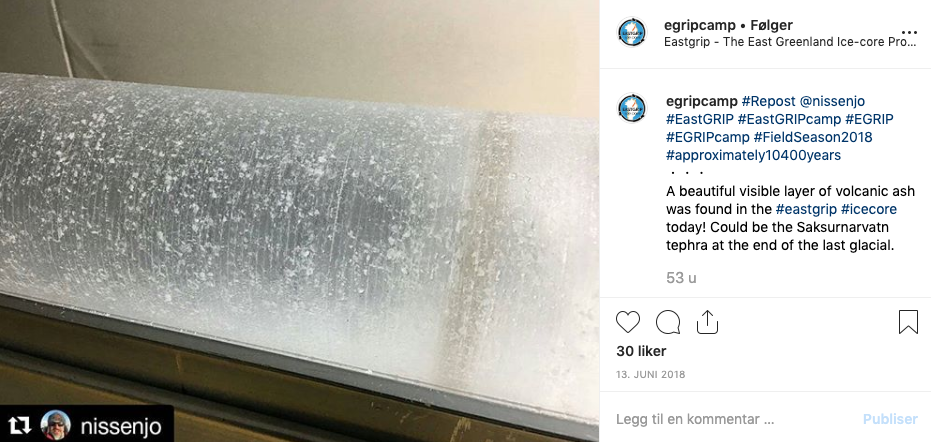
The dark layer in the ice core contains ashes from a volcano eruption, probably on Iceland during the last ice age. It's been estimated at 10400 years old.
Many scientists from different nations and institutions stay on the ice through the summer. Some also do research on the top layers, like the SNOWISO project. Here, the scientists have met challenges the past week, in the shape of unexpected heat and ice melting – the temperatures went up to the melting point, creating wet conditions.
- Follow the life on research station EastGRIP here
- Read more about the ice core research at EastGRIP here

